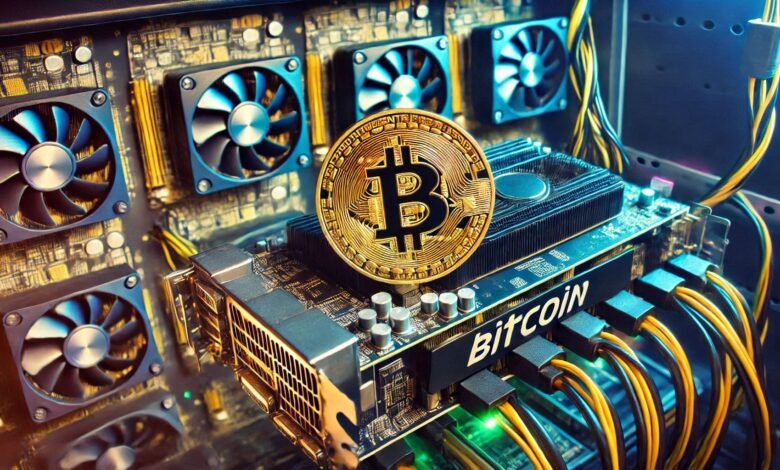Is Home Bitcoin Mining Still Profitable in 2025? Everything You Need to Know
Bitcoin mining has long been hailed as a pathway to financial independence for tech-savvy individuals. However, with rising costs, regulatory changes, and increasing competition, many are now questioning its viability.

Bitcoin mining has long been hailed as a pathway to financial independence for tech-savvy individuals. However, with rising costs, regulatory changes, and increasing competition, many are now questioning its viability. Is home Bitcoin mining still profitable in 2025? This article delves into the essential factors influencing profitability and explores whether mining bitcoin at home is a worthwhile investment today.
The Basics of Bitcoin Mining
Bitcoin mining is the process of validating transactions on the Bitcoin network and adding them to the blockchain. Miners solve complex mathematical puzzles using specialized hardware, competing for the reward of newly minted bitcoins and transaction fees. This decentralized process ensures the integrity and security of the network.
Hardware Evolution
- Early mining relied on basic CPUs and GPUs.
- Today, Application-Specific Integrated Circuits (ASICs) dominate due to their efficiency and high hashrates.
Why Mining Matters
Bitcoin mining secures the network, ensures decentralization, and incentivizes miners through block rewards. These rewards are halved approximately every four years in an event known as the Bitcoin halving.
Cost Factors in Home Bitcoin Mining
Bitcoin minning at home involves significant upfront and ongoing expenses. Here are the primary cost factors to consider:
1. Hardware Costs
- ASIC miners, such as the Antminer S19, range between $2,000 and $10,000 depending on their specifications and availability.
- Used or older hardware may be cheaper but less efficient, affecting profitability.
2. Electricity Costs
Electricity is often the largest expense for home miners.
- Average consumption for an ASIC miner: 3,000–4,500 watts per hour.
- Regional electricity rates vary, with areas offering cheaper power being more profitable.
3. Maintenance and Cooling
- Mining rigs generate heat, requiring cooling solutions such as fans or air conditioning.
- Regular maintenance is essential to ensure optimal performance and avoid costly downtime.
Read More: Cryptocurrency Mining in Pakistan: A Profitable Venture?
Bitcoin Mining Profitability: Key Metrics
Calculating profitability involves understanding key metrics and using online calculators. Factors include:
1. Hashrate
- Hashrate measures the computational power of your mining rig.
- Higher hashrates increase the likelihood of earning rewards.
2. Difficulty
- Mining difficulty adjusts approximately every two weeks to maintain consistent block production.
- As difficulty increases, earning potential decreases unless you upgrade your hardware.
3. Bitcoin Price
- The value of Bitcoin fluctuates, directly affecting profitability.
- Mining becomes more lucrative during bull markets when Bitcoin’s price is high.
Example Profitability Calculation
Using an Antminer S19:
- Hashrate: 95 TH/s
- Power consumption: 3,250 watts
- Electricity cost: $0.10/kWh
- Current Bitcoin price: $30,000
Monthly profit: Aapproximately$200 (after electricity costs).
Challenges Facing Home Bitcoin Miners
Home miners face several hurdles, which must be carefully weighed before investing.
1. Increasing Competition
- Large-scale mining farms with economies of scale dominate the industry.
- These operations can negotiate lower electricity rates and deploy cutting-edge technology, making it harder for home miners to compete.
2. Regulatory Environment
- Some countries impose restrictions or bans on Bitcoin mining due to environmental concerns.
- Understanding local regulations is crucial to avoid legal issues.
3. Environmental Concerns
- Bitcoin mining’s high energy consumption has drawn criticism.
- Transitioning to renewable energy sources can mitigate environmental impact but may increase initial setup costs.
Alternatives to Home Bitcoin Mining
If home mining feels too daunting or unprofitable, consider these alternatives:
1. Cloud Mining
- Rent mining power from a provider without owning hardware.
- Pros: No upfront hardware costs, less hassle.
- Cons: Contracts may be expensive, with lower returns.
2. Mining Pools
- Join a group of miners to share resources and split rewards.
- Pros: Higher chances of consistent earnings.
- Cons: Pooled rewards may be smaller, with fees involved.
3. Bitcoin Investment
- Instead of mining, invest directly in Bitcoin through exchanges.
- Pros: Eeasierand more liquid.
- Cons: No mining rewards or direct network contribution.
Is HhomeBitcoin MminingSstillPprofitablein 2024?
The profitability of home Bitcoin mining depends on several factors:
When Home Mining Makes Sense
- Access to low-cost or renewable electricity.
- Ownership of efficient ASIC miners.
- Residing in a region with favorable regulations.
When It’s Not Viable
- High electricity rates or unreliable power supply.
- Inability to invest in the latest hardware.
- Limited knowledge of cryptocurrency and mining operations.
Key Takeaway
While home mining can still be profitable under ideal conditions, for many, the barriers to entry and ongoing costs outweigh potential earnings. Alternatives like mining pools or direct Bitcoin investment may offer a better risk-to-reward ratio.
Conclusion
Home Bitcoin mining in 2025 is no longer as accessible or profitable as it once was. Rising costs, increased competition, and environmental concerns pose significant challenges. However, for those with the right resources and commitment, it remains a viable option.
If you’re considering home Bitcoin mining, carefully evaluate your costs and potential returns. Alternatively, explore options like cloud mining, mining pools, or direct investment to participate in the Bitcoin ecosystem.











